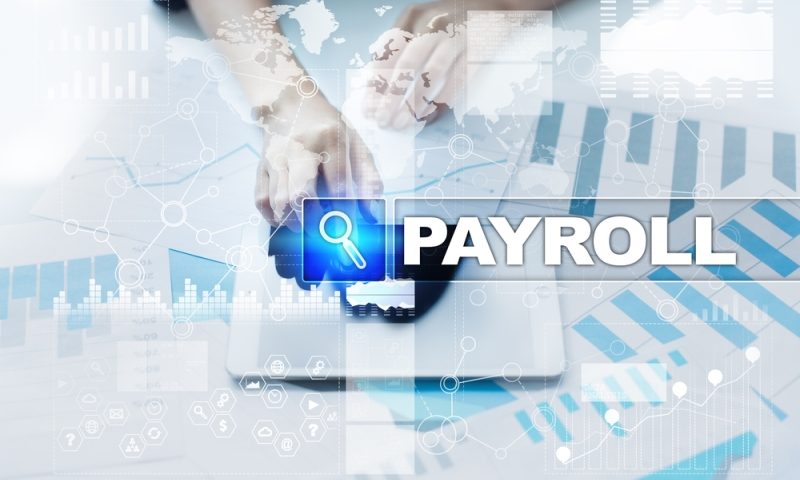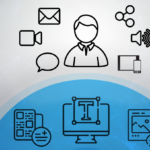Employee payroll management is one of the most basic duties of the HR department of any organization. Processing payroll accurately ensures that the employees are compensated correctly on time while keeping the business compliant with labour-related statutory regulations.
Since traditional methods of payroll management are often time-consuming and error-prone, payroll software has been a boon to the HR department. It automates the entire payroll process, simplifying it, as well as automating the stressful aspects of the process.
So, let us understand the workings of payroll software!
Key Features of Payroll Software
Some of the key features of payroll software are:
Automated Calculations
Payroll software streamlines your salary processing by calculating the allowances, bonuses, and overtime, based on ‘monthly inputs’. It automatically deducts income tax, provident fund, professional tax, etc. ensuring compliant salary payments to your staff. Additionally, it also ensures that the salary calculations remain consistent across different salary cycles, which helps in reducing the chances of manual errors.
Tax Compliance
Another important advantage of deploying dedicated payroll software is its ability to automate your tax calculations. It ensures compliance with government regulations by automatically updating tax slabs and generating tax forms such as Form 16 for Indian employees. Commonly used payroll systems also provide alerts for upcoming tax deadlines, letting you avoid penalties and hefty fines.
Attendance Integration
Modern payroll software is also able to integrate seamlessly with attendance management systems. By synchronizing data from biometric devices, it ensures that salary calculations are accurate, based on working hours and leave data. It eliminates the need for manual verifications, further improving the efficiency of the payroll process.
Custom Pay Structures
Payroll software also provides options to customize the different salary components of employees, such as basic pay, HRA, DA, TA, performance bonuses, variable pay, etc. This flexibility makes it easier for organizations to cater to different categories of employees, ensuring fairness and transparency in the salary structure.
ESS Portal
The ESS portal empowers employees to view their payslips, tax declarations, and leave balances easily. It frees the HR teams from mundane administrative work and improves transparency, which results in enhancing the trust of employees in their organization. Additionally, this portal enables employees to update their details, such as bank account information or contact numbers, ensuring up-to-date records.
Payslip Distribution
Additionally, payroll software automates the creation and distribution of payslips, ensuring that employees receive accurate and detailed records of their payments. This feature not only saves time but also eliminates the risk of errors that can occur with manual payslip generation.
Payroll Software Workflow
The common payroll process workflow using payroll software is as follows:
1. Input Employee Data
The payroll process begins with entering employee details, such as salary structure, tax details, bank account info, etc. into the system. For new employees, the data from the onboarding system is automatically fetched by the payroll software, ensuring their addition and accurate payroll from the first salary cycle itself.
2. Collate Attendance Data
The software integrates with attendance systems to gather information on working hours, overtime, and leaves of the employees. It ensures that payroll calculations reflect real-time attendance records, eliminating errors. Many systems also provide options for holiday calendars and leave policies to be configured, further automating the calculation of leave balances, and resulting in accurate payments.
3. Process Payroll
Once all the inputs are in place, the software calculates an employee’s net pay by deducting taxes, provident fund contributions, and other statutory deductions from the gross salary. The system also handles unique scenarios, such as bonuses, incentives, and arrears, ensuring that every payment is accounted for accurately.
4. Generate Reports and Payslips
Once the payroll is processed, the software generates detailed reports for management overview. These reports include information on payroll summaries, tax deductions, and compliance metrics. It also creates payslips, which are accessible to employees via the ESS Portal, allowing them to download or print their salary details whenever required.
5. Disburse Payments
Modern payroll software also integrates with banking systems, enabling seamless salary disbursement. The system ensures timely payments directly into employees’ accounts. This integration reduces the administrative burden on the HR and banking teams and ensures compliance with banking regulations, further streamlining the entire payment process.
6. Compliance Handling
Payroll software also ensures compliance with the tax laws, labour regulations, and statutory requirements. As a result, it minimizes the risk of penalties and fines. It also keeps track of changing compliance requirements and updates the system automatically, ensuring that organizations remain updated with the latest regulations.
Benefits of Using Payroll Software
The major benefits of using payroll software are:
Enhanced Efficiency
Automating payroll tasks saves significant time, while also reducing administrative costs. The software handles complex calculations, freeing HR teams to focus on strategic tasks such as talent acquisition and retention, employee engagement, etc.
Accuracy & Compliance
Payroll errors can lead to employee dissatisfaction, and in some scenarios, legal troubles. A robust payroll software ensures accurate calculations, and helps you stay compliant with all regulatory norms, reducing the risk of penalties and fines. Automated compliance updates further ensure that organizations remain compliant with the ever-changing regulations.
Data Security
Handling sensitive employee information requires robust security measures. Hence, payroll software utilizes the latest encryption standards and secure access protocols to protect the payroll data from any kind of breaches. It ensures that confidential employee information, such as salaries and bank details, remains safe from cyber threats.
Scalability
Payroll Software is also scalable according to company’s requirements. Due to the modular nature of the software, it can easily cater to small start-ups, as well as large enterprises. Whether managing payroll for ten employees or ten thousand, the payroll software adapts seamlessly to changing requirements, making it an ideal long-term partner for any organization.
Conclusion
As the workplace evolves, adopting technology-driven solutions like payroll software is no longer a luxury but a necessity. Whether you are a small business or a large corporation, payroll software is the key to efficient, error-free payroll processing. Investing in such a solution not only ensures timely and accurate payments but also empowers employees, streamlines operations, and aids organizational growth.








